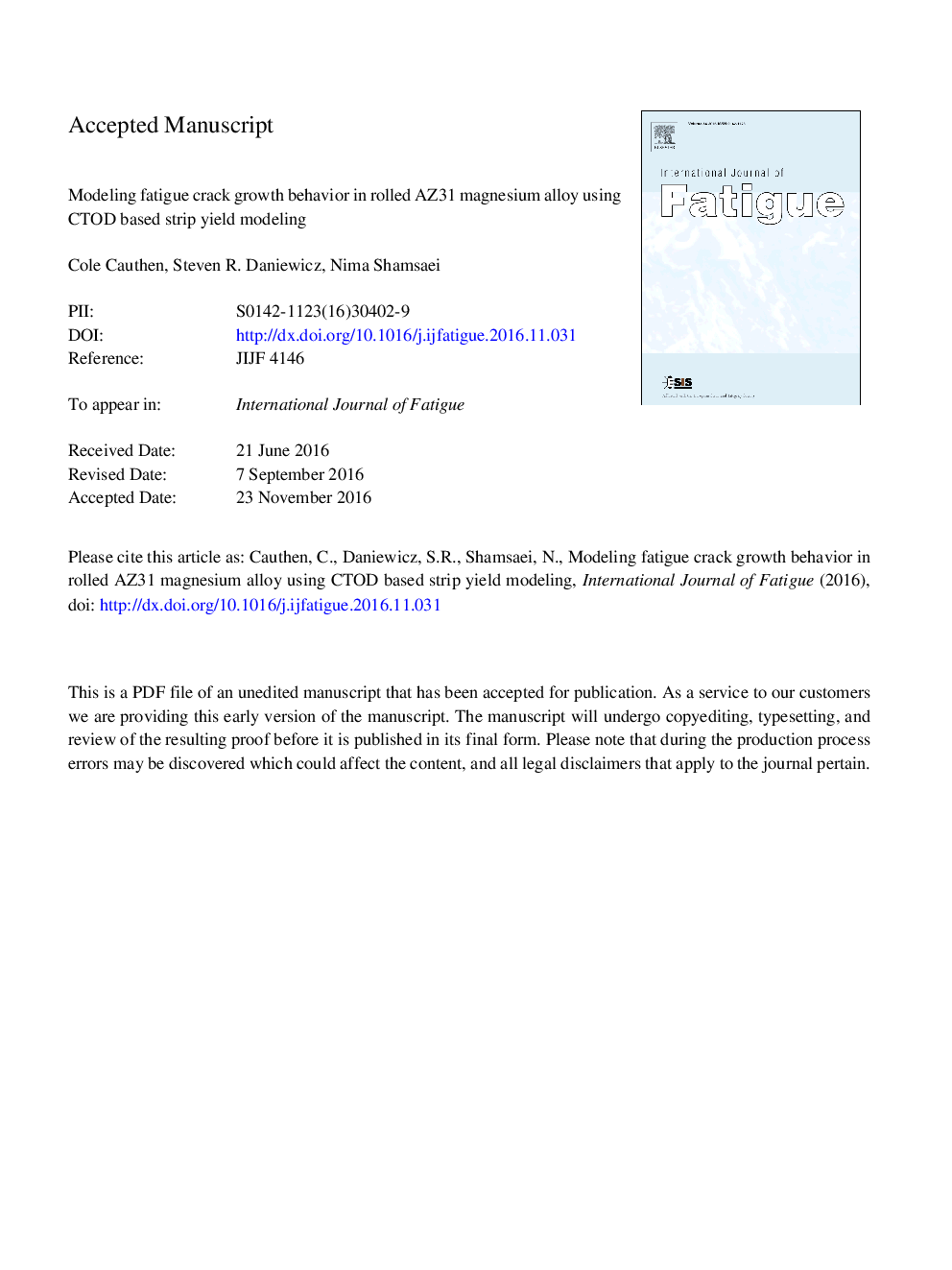| کد مقاله | کد نشریه | سال انتشار | مقاله انگلیسی | نسخه تمام متن |
|---|---|---|---|---|
| 5015169 | 1463729 | 2017 | 50 صفحه PDF | دانلود رایگان |
عنوان انگلیسی مقاله ISI
Modeling fatigue crack growth behavior in rolled AZ31 magnesium alloy using CTOD based strip yield modeling
دانلود مقاله + سفارش ترجمه
دانلود مقاله ISI انگلیسی
رایگان برای ایرانیان
کلمات کلیدی
موضوعات مرتبط
مهندسی و علوم پایه
سایر رشته های مهندسی
مهندسی مکانیک
پیش نمایش صفحه اول مقاله

چکیده انگلیسی
Fatigue crack growth behavior of a rolled AZ31 magnesium plate is investigated and modelled in this study. Fatigue crack growth tests were performed on compact tension specimens at load ratios of RÂ =Â 0.1 and RÂ =Â 0.7 to provide data for a strip-yield based fatigue crack growth model. Minimal differences in crack closure were observed between the two load ratios. Threshold values for the stress intensity factor range were found to be often less than those reported in previous literature. The reason for lower threshold values could be related to the nontraditional compression pre-cracking method used in this study, which was employed in an attempt to produce a more accurate measurement of the fatigue crack threshold. In addition to the long crack fatigue crack growth testing using compact tension specimens, load controlled fatigue tests were conducted on flat, reduced gage specimens at load ratios of RÂ =Â 0.1 and RÂ =Â â1.0 to study the microstructurally small crack growth behavior and to extend the model capability to predict the microstructurally small crack growth behavior. The reduced gage specimens were found to spend the majority of their life in the crack growth stage. Cracks primarily grew in a planar fashion other than where multiple cracks coalesced. The microstructurally small crack growth data from these experiments were also compared with predictions from the fatigue crack growth model. Crack growth modeling revealed that traditional calculations using plasticity-induced crack closure concepts and an effective stress intensity factor range were not able to predict the microstructurally small crack growth behavior of these specimens. In contrast, computing crack growth rate from crack tip opening displacement was shown to give satisfactory results. Crack opening stresses for the fully reversed tests revealed that the compressive loading largely nullified the effect of the plastic wake on fatigue crack growth.
ناشر
Database: Elsevier - ScienceDirect (ساینس دایرکت)
Journal: International Journal of Fatigue - Volume 96, March 2017, Pages 196-207
Journal: International Journal of Fatigue - Volume 96, March 2017, Pages 196-207
نویسندگان
Cole Cauthen, Steven R. Daniewicz, Nima Shamsaei,